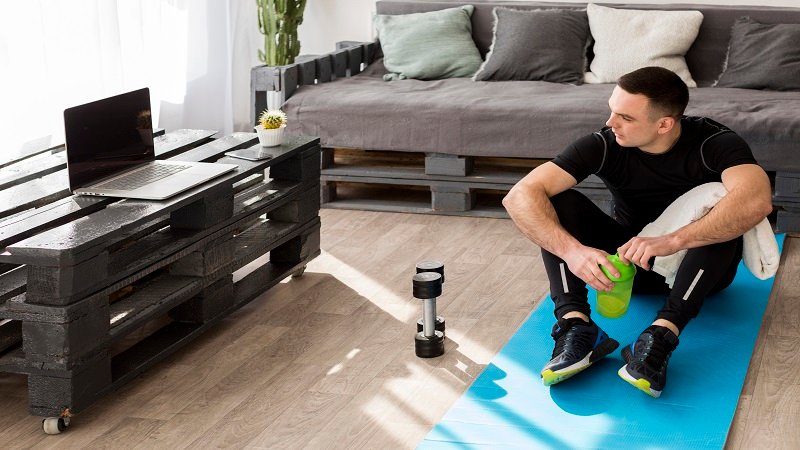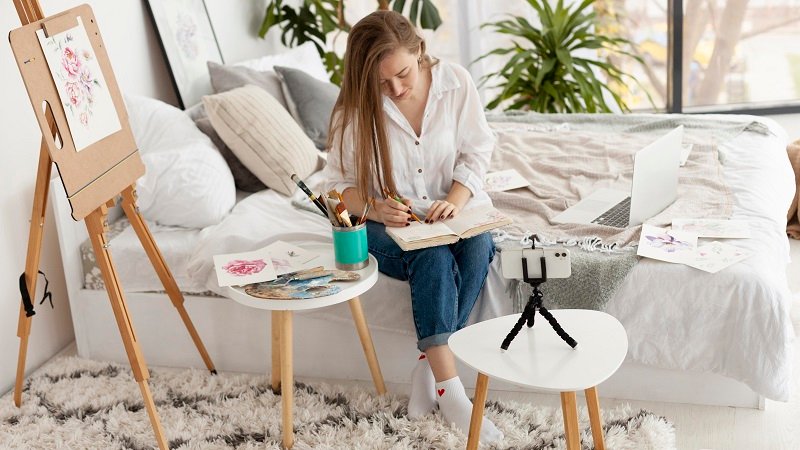Spending time indoors has become a part of modern life for many people. Whether it’s due to weather, work-from-home routines, or simply personal preference, finding enjoyable and meaningful indoor activities can make a big difference in how we feel and how productively we use our time. Indoor activities are not only about entertainment—they also encourage learning, creativity, family bonding, and self-care. This article explores a wide range of ideas for productive, fun, and relaxing indoor pursuits. The topic of Indoor Activities Lwmfcrafts focuses on ways to stay active, creative, and connected, regardless of age or environment.
1. The Value of Indoor Activities
Indoor activities play an important role in maintaining a healthy balance between rest and productivity. When people think about spending time indoors, the image of watching television often comes to mind. However, there are many other ways to make indoor time enjoyable and enriching.
Engaging in meaningful indoor activities can help:
-
Reduce stress by focusing the mind on creative or hands-on tasks.
-
Encourage learning through reading, puzzles, or skill-based hobbies.
-
Strengthen relationships by sharing games or projects with family and friends.
-
Improve mental health by providing structure and personal satisfaction.
-
Promote creativity by allowing individuals to experiment with ideas and crafts.
2. Creative Hobbies for Indoors
Creativity thrives when you give it time and attention. Indoor hobbies allow individuals to explore their artistic side without pressure. A few popular options include:
a. Painting and Drawing
You don’t need professional skills to start painting or sketching. Using simple materials like pencils, markers, or watercolors, anyone can express emotions and thoughts visually. Creating art helps improve concentration and patience while also serving as an emotional outlet.
b. Paper Crafts
Paper-based projects such as origami, card-making, and scrapbooking can be both relaxing and satisfying. These crafts are affordable and ideal for people who want to work with their hands without needing special equipment.
c. DIY Home Decor
Decorating indoor spaces through handmade art pieces or small design projects gives a sense of personal accomplishment. Examples include candle-making, macramé wall hangings, and photo frame decorations.
These creative practices reflect the essence of Indoor Activities Lwmfcrafts, where art and hands-on creation become part of one’s lifestyle.
3. Educational Indoor Activities
Learning does not have to stop after school or work. Indoors, you can explore a world of knowledge and skill development.
a. Reading and Writing
Books are gateways to imagination and information. Reading novels, biographies, or articles helps expand vocabulary and stimulate the mind. Writing, on the other hand, allows self-expression through journaling, blogging, or storytelling.
b. Online Courses
The digital world has made education more accessible than ever. From learning a new language to exploring computer programming or photography, online classes can be taken at one’s own pace.
c. Puzzles and Brain Games
Solving crosswords, Sudoku, or jigsaw puzzles enhances memory and problem-solving abilities. These activities are not only entertaining but also beneficial for brain health.
Through continuous learning indoors, people stay mentally active and curious, a concept central to Indoor Activities Lwmfcrafts.
4. Indoor Physical Activities

Staying physically active indoors is just as important as being mentally engaged. Exercise supports good health, reduces fatigue, and lifts mood.
a. Home Workouts
A short daily routine that includes stretching, yoga, or light cardio exercises can improve overall fitness. These activities don’t require large spaces or special equipment—just consistency.
b. Dance and Movement
Dancing freely or following online dance classes adds fun to physical exercise. It’s an expressive and joyful way to stay active while listening to favorite music.
c. Indoor Sports
If space allows, games like table tennis, badminton, or even mini-basketball are exciting ways to get moving. These activities can also bring friends or family together.
Indoor physical activities align with the idea behind Indoor Activities Lwmfcrafts—keeping the mind and body active even within home boundaries.
5. Family-Oriented Indoor Activities
Family time is precious, and indoor settings offer plenty of opportunities to build connections. Shared activities help strengthen relationships and teach cooperation.
a. Board Games and Card Games
Games such as chess, Monopoly, or Uno encourage teamwork, patience, and laughter. They are suitable for all ages and can fill an evening with enjoyment.
b. Cooking Together
Preparing meals as a group is both educational and entertaining. Children can learn basic cooking skills while adults enjoy experimenting with new recipes.
c. Movie Nights
Transform your living room into a mini theater. Choose a theme, prepare snacks, and enjoy an evening of storytelling and bonding.
d. Indoor Gardening
Even without outdoor space, plants can thrive indoors. Growing herbs or small decorative plants teaches patience and responsibility while beautifying the home.
Through these family-centered options, households can find joy and togetherness, keeping the spirit of Indoor Activities Lwmfcrafts alive in everyday life.
6. Relaxation and Mindfulness Indoors
While activity is important, so is relaxation. Indoor time offers the chance to rest, reflect, and regain emotional balance.
a. Meditation and Yoga
Meditation helps quiet the mind and improve focus. Yoga adds gentle physical exercise that strengthens the body and enhances flexibility. Together, they build emotional stability and peace.
b. Listening to Music
Music has the power to soothe, motivate, and inspire. Whether it’s classical, instrumental, or favorite modern songs, listening to music creates a calm atmosphere.
c. Reading for Pleasure
Reading before bed or during quiet hours can reduce stress and improve sleep quality. It allows the imagination to travel without leaving the room.
Relaxation activities ensure that time indoors remains balanced—neither overly idle nor overly busy.
7. Indoor Activities for Children
Children have endless energy and curiosity. Indoor activities should stimulate their creativity while keeping them entertained.
a. Arts and Crafts
Simple projects like painting rocks, making clay models, or decorating paper masks help children develop fine motor skills.
b. Educational Games
Interactive educational games, puzzles, or science kits make learning fun and practical.
c. Storytelling
Reading stories aloud or encouraging children to invent their own tales strengthens language and imagination.
d. Building and Construction Toys
Blocks, Lego sets, or simple household materials can become tools for building creativity and problem-solving abilities.
By engaging in thoughtful indoor activities, children stay active both mentally and physically.
8. Indoor Activities for Adults
Adults often struggle to find time for themselves. Indoor hobbies can serve as an escape from daily stress and as opportunities for personal growth.
a. Journaling and Planning
Writing down thoughts, setting goals, or reflecting on the day helps clear the mind and organize life.
b. Cooking and Baking
Experimenting in the kitchen can be both relaxing and rewarding. Trying new cuisines encourages creativity while improving practical skills.
c. Online Socializing
Virtual book clubs, game nights, or video calls with friends can maintain social connections without leaving home.
d. Learning Music or Instruments
Music is a lifelong skill that brings joy and accomplishment. Many instruments can be learned indoors with basic tools and online guidance.
These activities foster growth, reflection, and recreation—all central to a balanced indoor lifestyle.
9. Productive Indoor Projects

Not all indoor activities are purely for leisure; some can enhance personal or home productivity.
a. Organizing and Decluttering
Tidying up closets, drawers, or workspaces improves focus and comfort. Minimal, organized spaces often lead to clearer thinking.
b. Skill Development
Learning to code, mastering photography, or improving communication skills can all be done indoors. Such pursuits add long-term value to both career and personal life.
c. Home Improvement Projects
Painting walls, rearranging furniture, or doing minor repairs are productive ways to spend time indoors. They give a sense of achievement while refreshing the living space.
10. Benefits of Balancing Indoor and Outdoor Life
While indoor activities provide comfort and security, balancing them with outdoor experiences is ideal. Too much indoor time may lead to inactivity or isolation, while outdoor activities refresh the senses. Maintaining a mix ensures a healthy body and mind.
Some tips for balance include:
-
Scheduling daily outdoor walks if possible.
-
Keeping indoor hobbies that can occasionally move outdoors (like reading or sketching in natural light).
-
Setting limits on screen time to prevent fatigue.
This balance ensures that Indoor Activities Lwmfcrafts remain enjoyable, healthy, and sustainable for the long term.
Conclusion
Indoor time doesn’t have to be dull or repetitive. With creativity, structure, and intention, it can become a meaningful part of daily life. From crafting, learning, and exercising to relaxing and bonding, there’s an indoor activity suited to everyone’s interests and lifestyle.
Indoor Activities Lwmfcrafts highlights the idea that creativity and connection can thrive anywhere—even within four walls. Whether it’s painting, cooking, reading, or organizing, each task adds value to one’s day. In the end, the purpose of indoor activities is not just to pass time, but to use it thoughtfully—to learn, create, rest, and grow.

